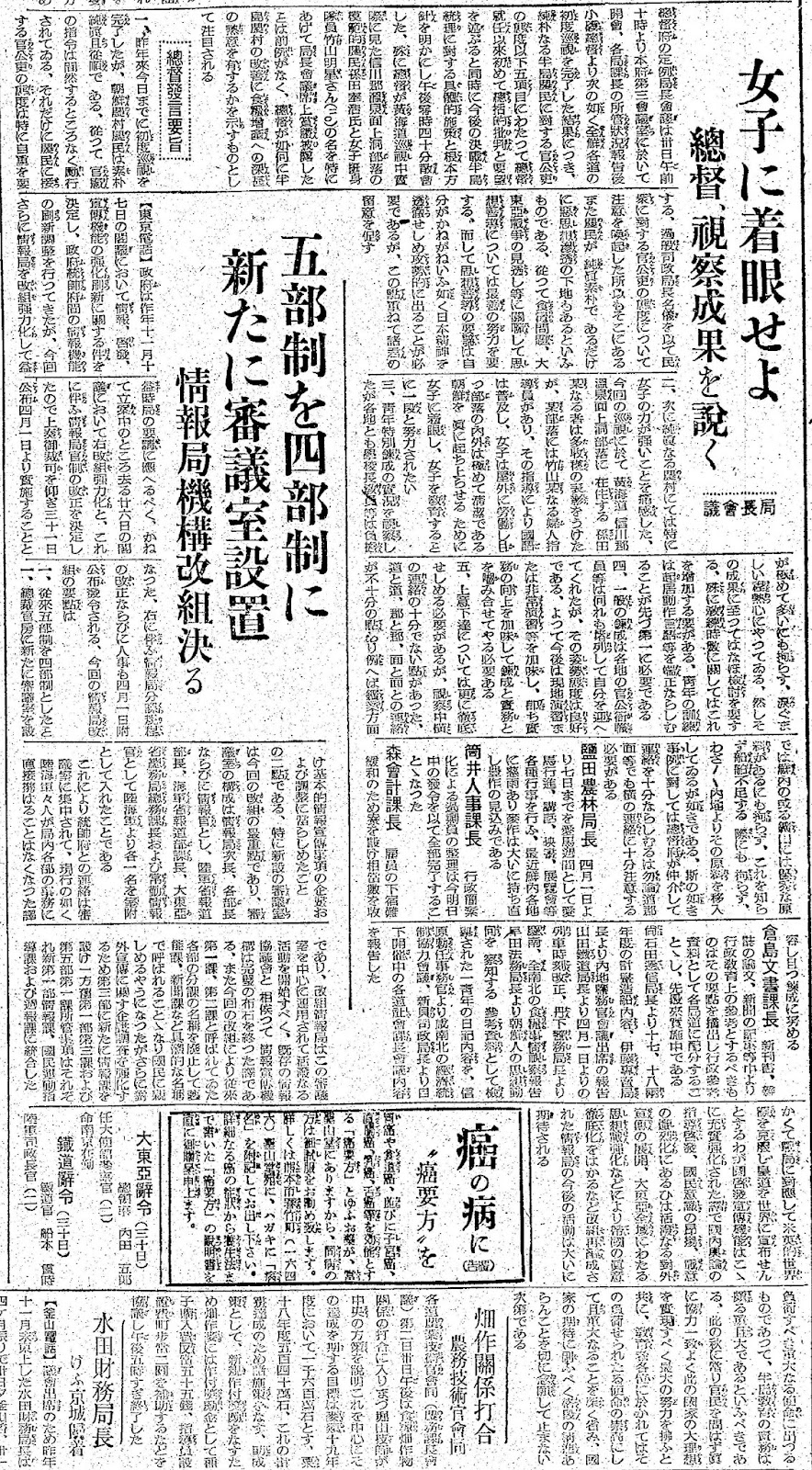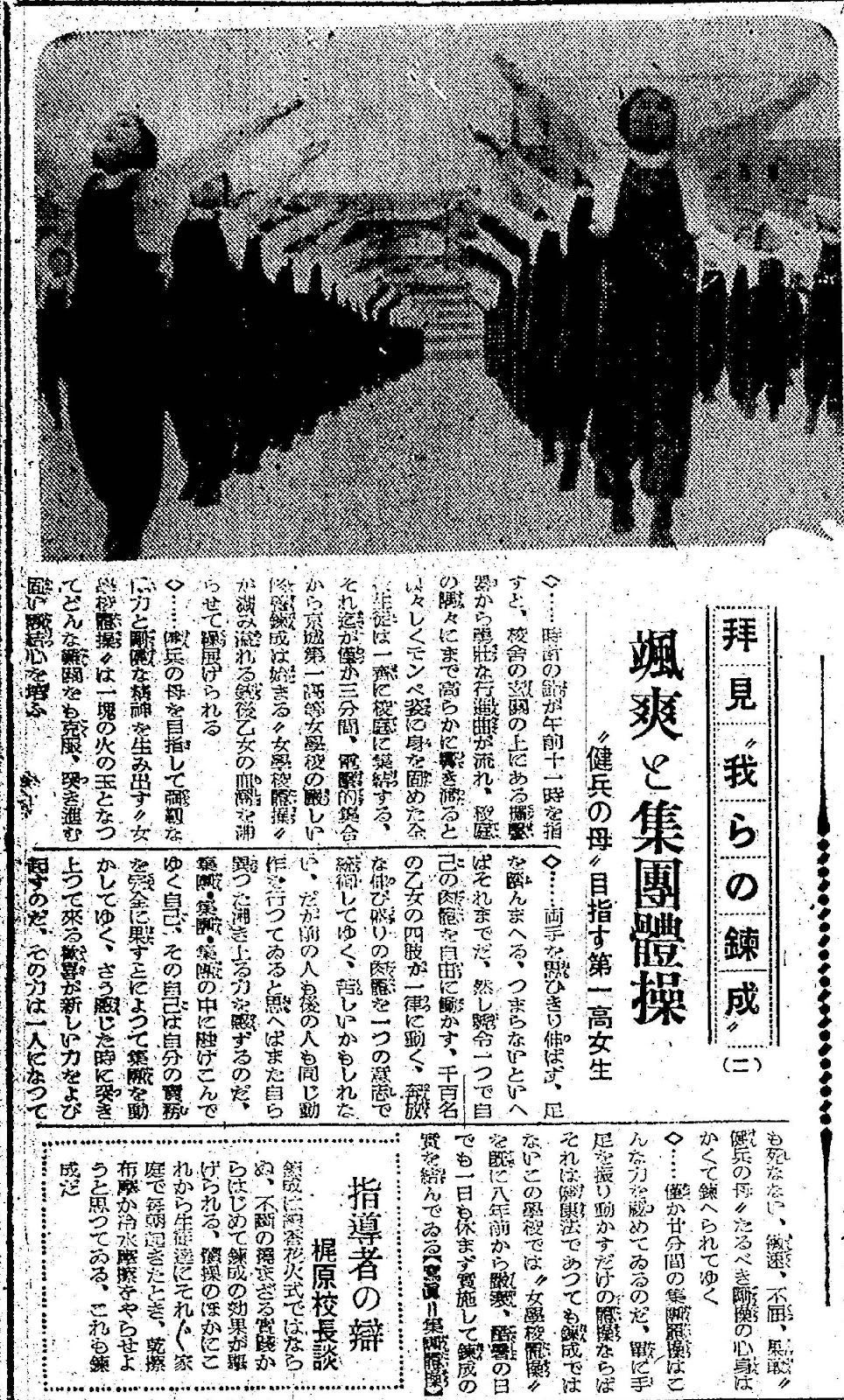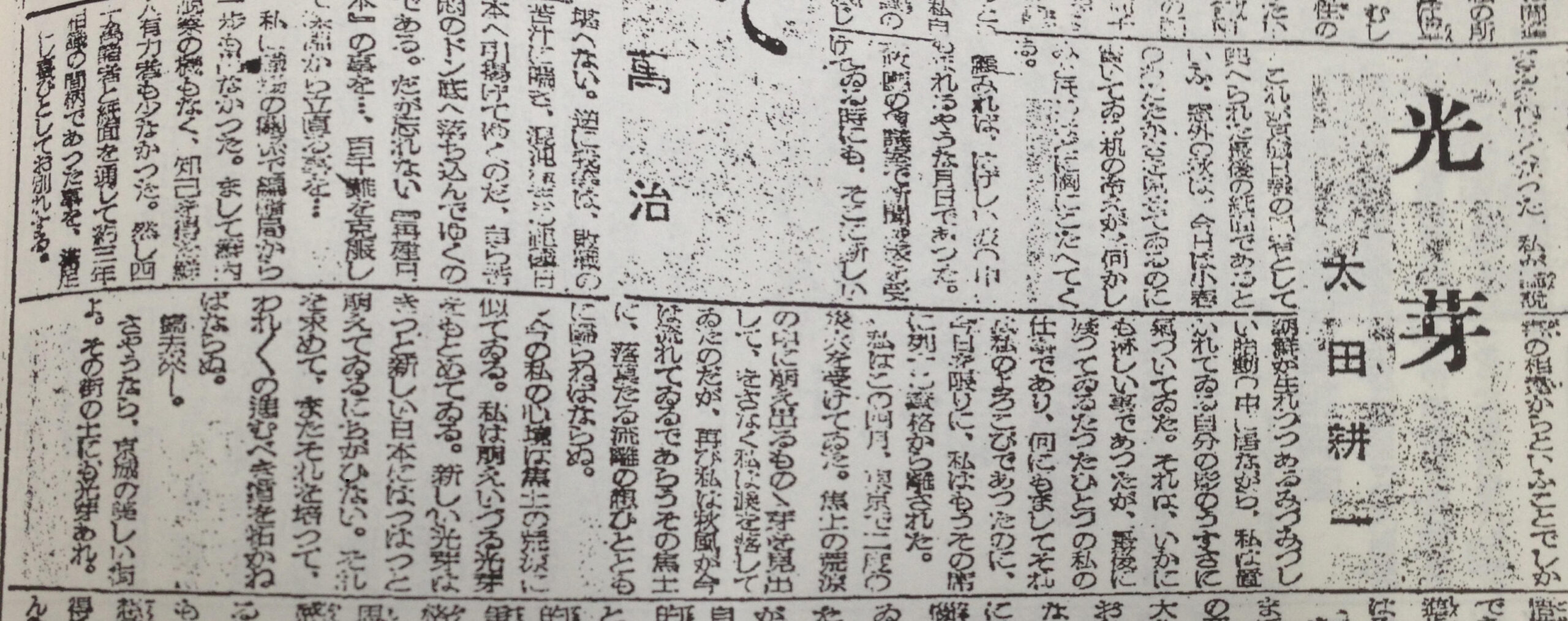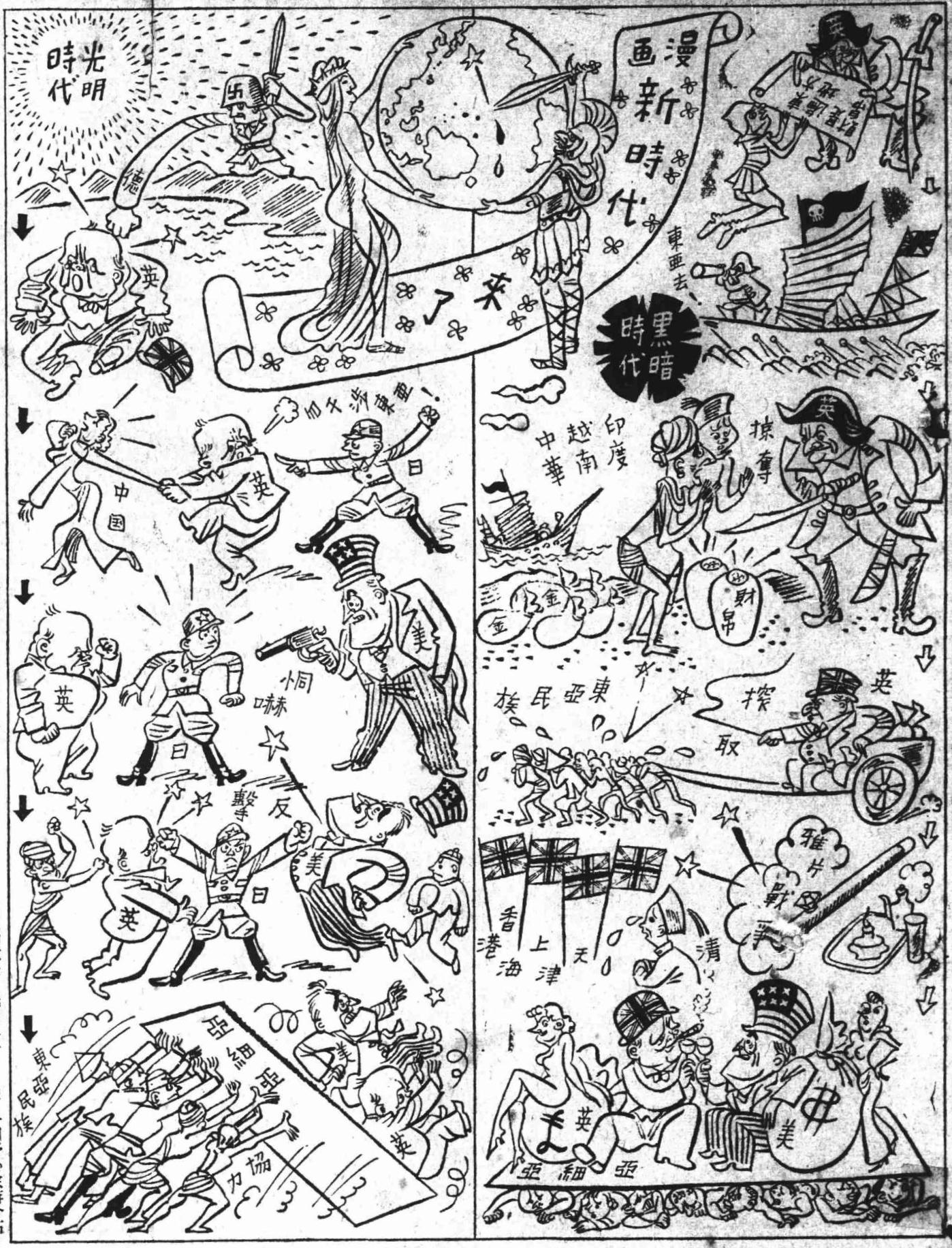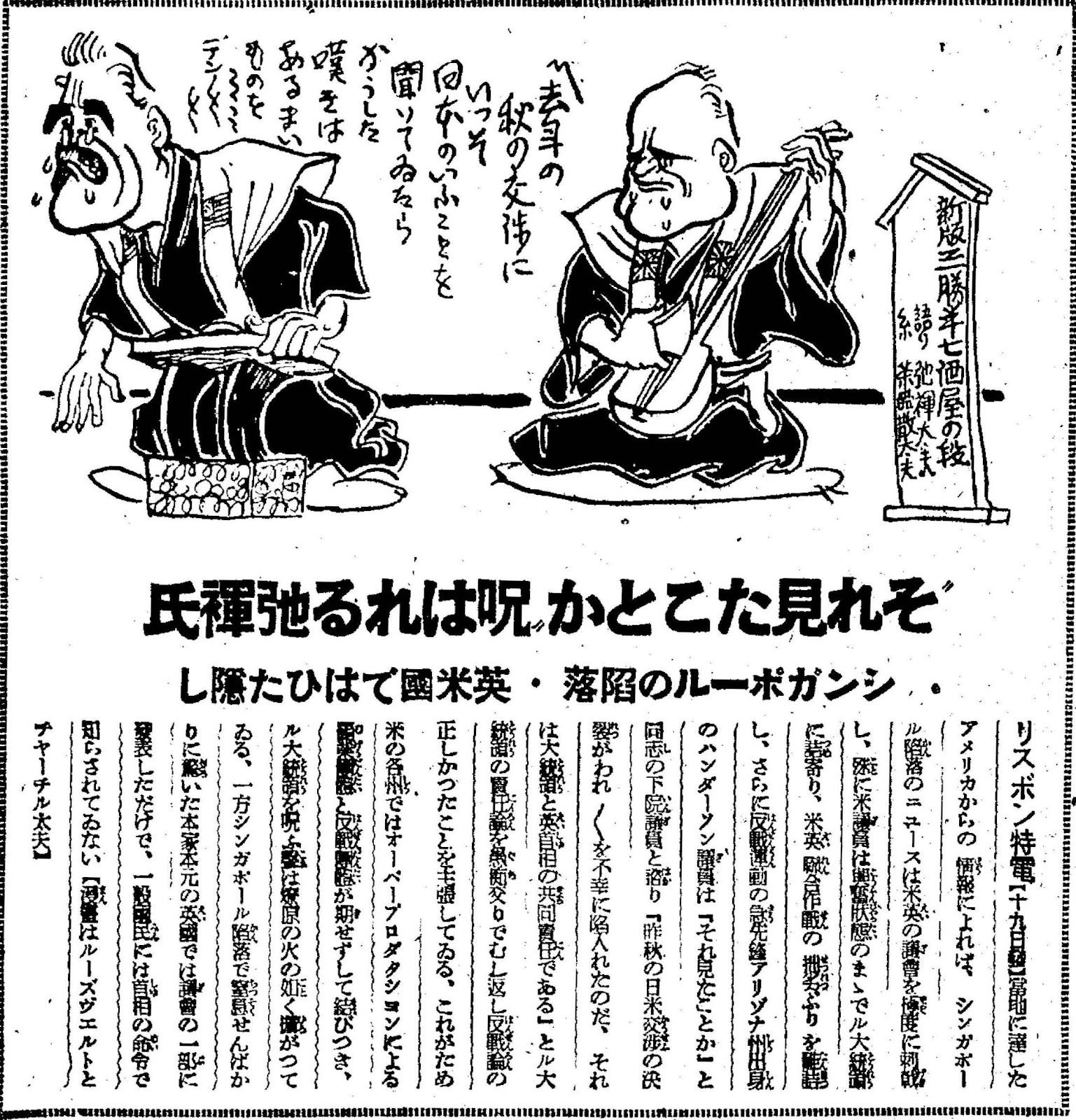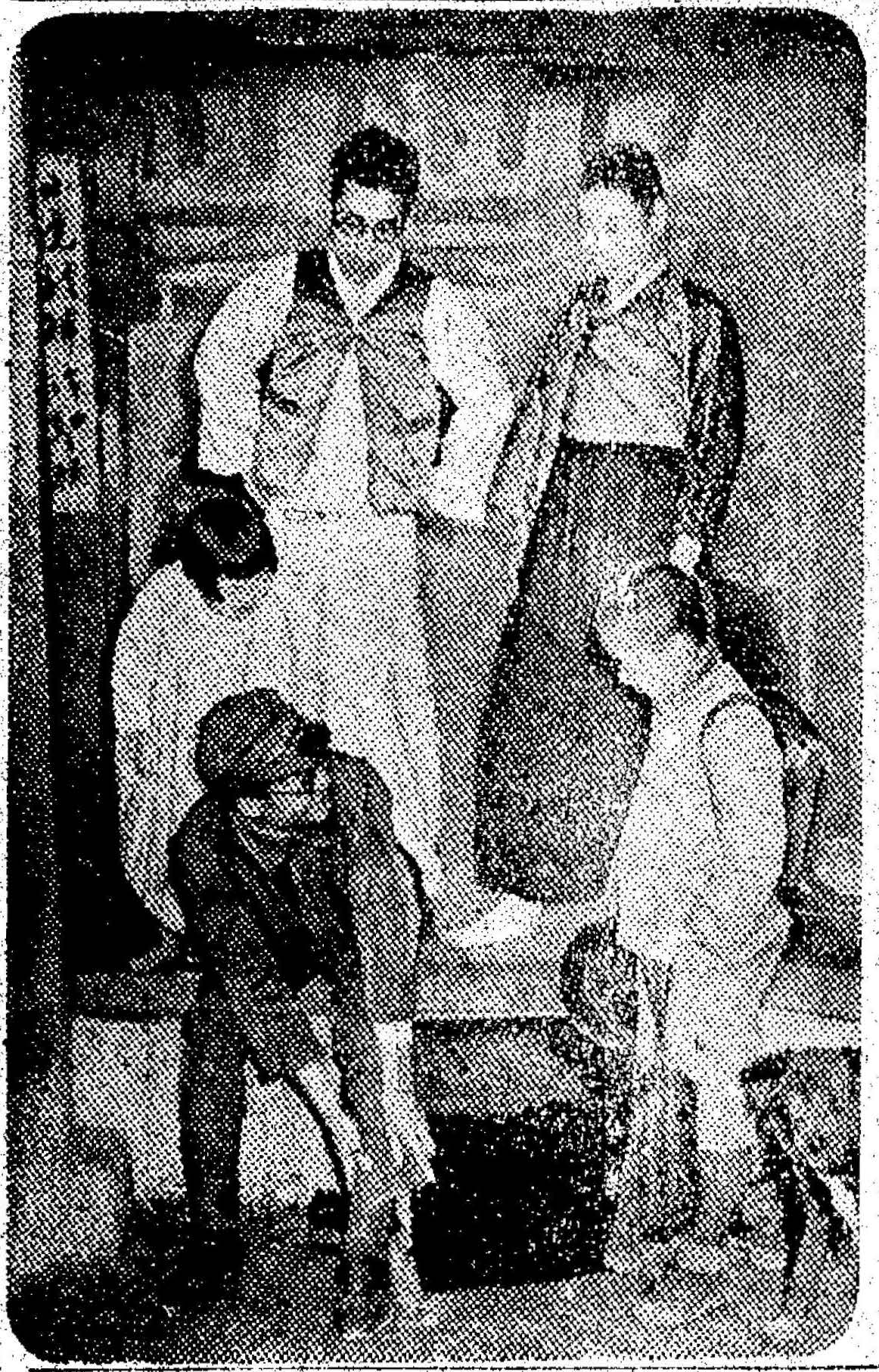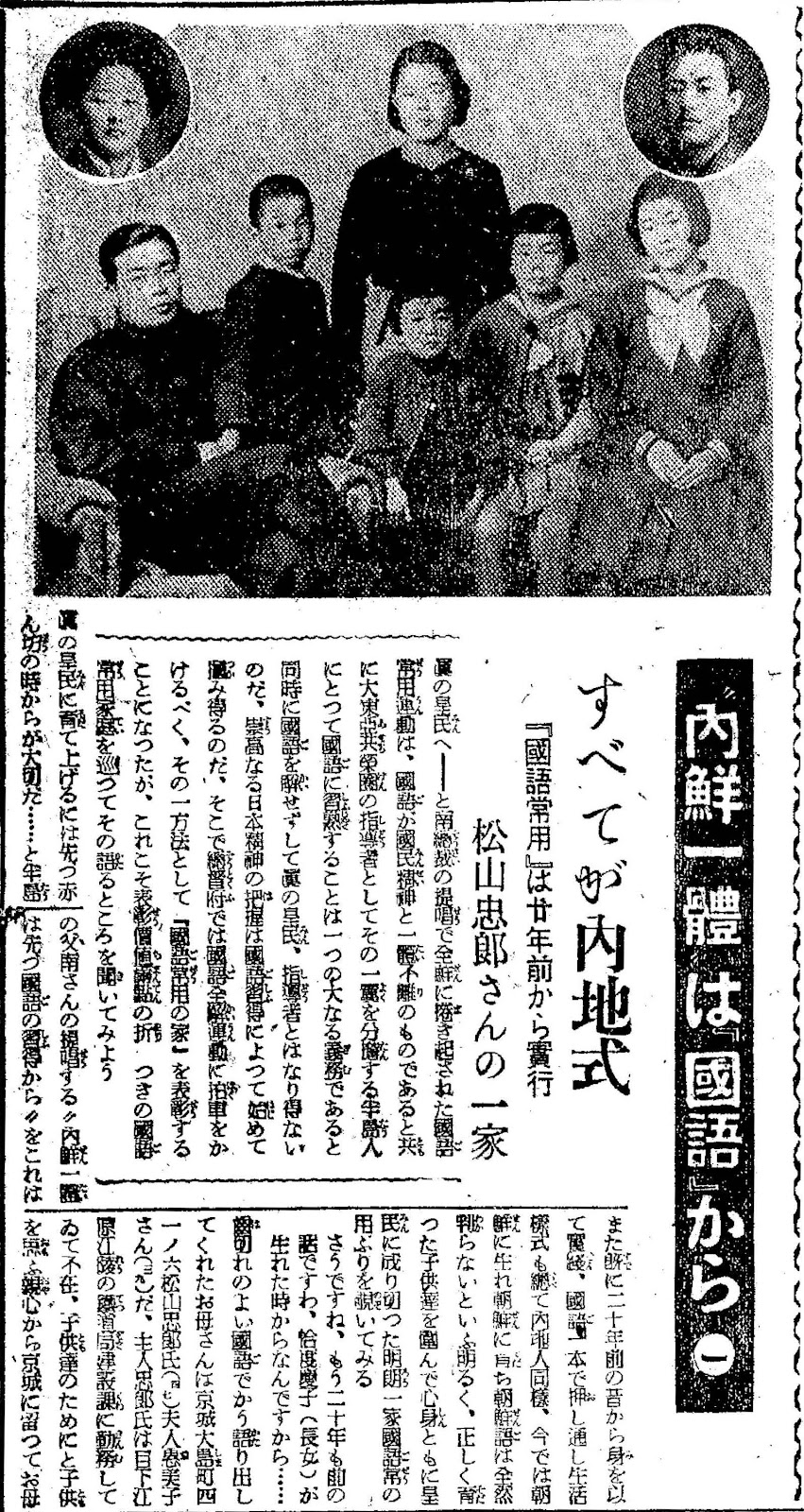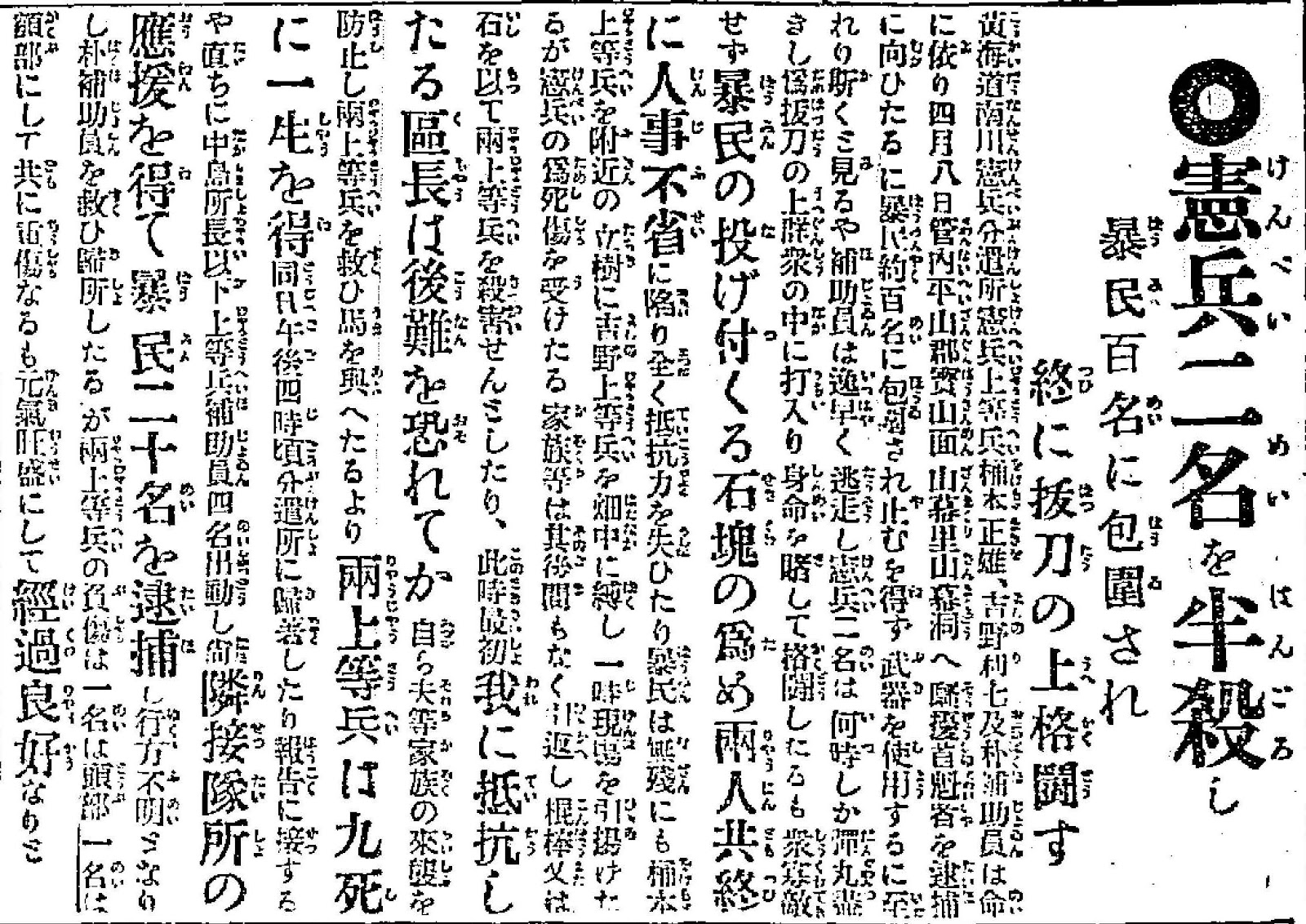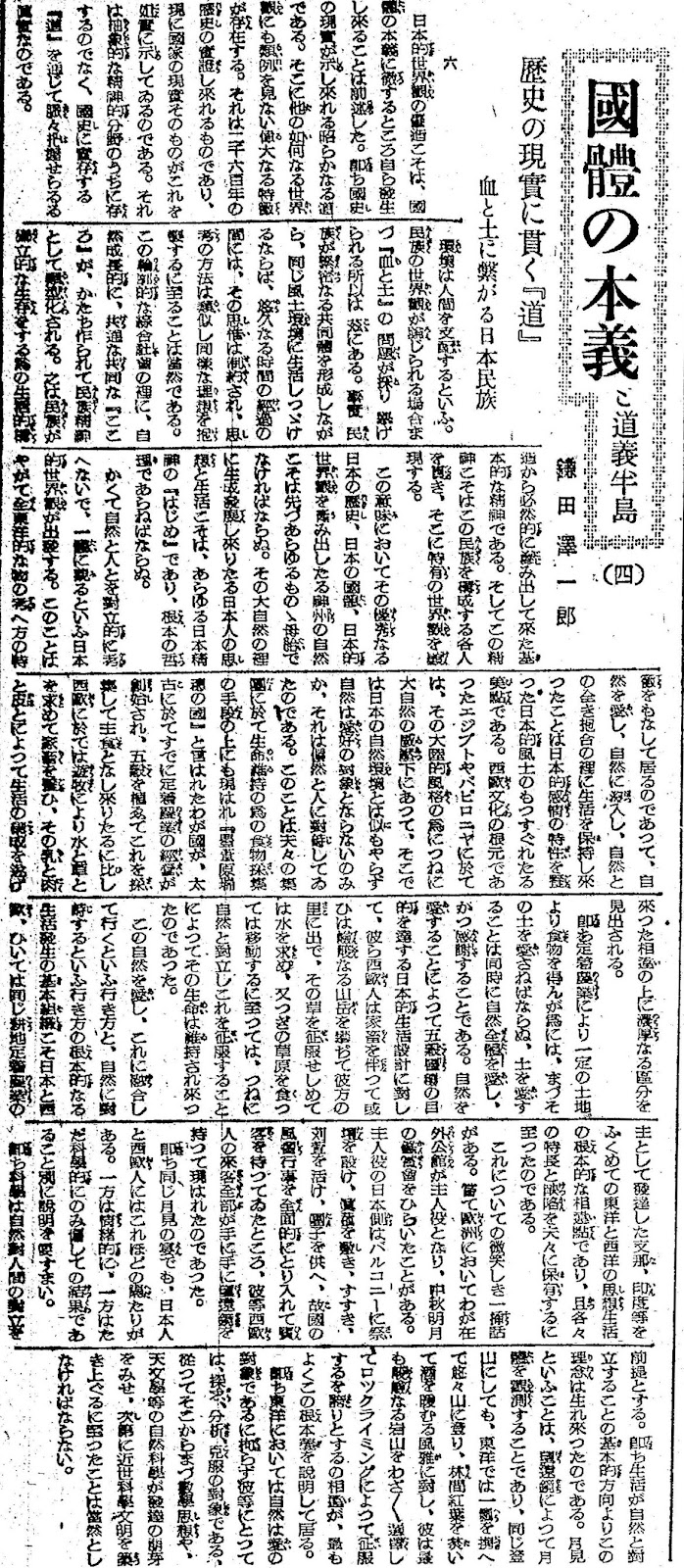
1943 Editorial: nature is an object of love in Japan, while nature is an object of conquest in the West, which is why the early Scientific revolution started in the West
The True Meaning of National Identity and the Righteous Peninsula (4)
The “Way” Penetrating the Reality of History
The Japanese Nation Connected to Blood and Soil
by Sawaichiro Kamata
As I have already mentioned, the creation of the Japanese worldview is the result of a commitment to the true meaning of national identity. In other words, it is a clear way that the reality of national history can show us. Therein lies a great characteristic that is unparalleled in any other worldview. It is something that can be demonstrated through 2,600 years of history, and the reality of the nation state itself is a clear demonstration of this. It is not an abstract spiritual field, but a truth that can be thoroughly grasped through the “Way” that exists in national history.
It is said that the environment dominates man. This is the reason why the issue of “blood and soil” is always mentioned when discussing the worldviews of ethnic groups. If peoples continue to live in the same climatic environment while forming a close community, it is natural that their thoughts will be constrained and their ways of thinking will become similar and embrace similar ideals during the passage of time.
In the course of this contoured and integrated society, a common and shared “spirit” will naturally develop and be typified as a national spirit. This is the basic spirit that inevitably emerges from the living structure of the nation to ensure its independent survival. It is this spirit that permeates each and every member of the nation and manifests its unique worldview.
In this sense, the nature of Shinshu, which has given birth to the excellent history of Japan, the national identity of Japan, and the Japanese worldview, must first of all be the mother of all things. The thought and life of the Japanese people, which have been created and developed in the midst of this great nature, must be the “beginning” of every Japanese spirit and fundamental philosophy.
There emerges a Japanese worldview in which nature and people are not seen as opposites, but as one. This will soon become a characteristic of thinking of all East Asia. The love of nature, the immersion in nature, and the maintenance of life in full embrace with nature are the outstanding virtues of the Japanese climate that nurtured the characteristics of Japanese feelings.
In the Egyptian and Babylonian cultures, which were the roots of Western culture, the continental character of the people meant that they were always under the intimidation of nature, which, unlike the natural environment in Japan, was not only not an object of love, but also something fearful that fought people. This is also evident in the way each group of people gather food to sustain their lives. In Japan, known as the Land of Abundant Reeds, the management of settled agriculture was already established in ancient times, and the five grains were planted and gathered as staple food. In stark contrast, we can see that, in the West, nomadic livestock was raised by searching for water and grass, and their livelihood was based on milk, meat, and skin.
In other words, in order to obtain food from a certain land through settled agriculture, we must first love the soil. To love the soil is to love and appreciate nature as a whole. In contrast to the Japanese way of life, which achieves the goal of a bountiful harvest by loving nature, Westerners go out to the countryside with their livestock or by scaling the steep mountains to seek water and letting them eat the grass, or by moving on to let them eat at the next meadow. By confronting and conquering nature, they have been able to maintain their lives.
The basic organization of the fundamental development of life, which is based on the way of loving and integrating with nature, or based on the way of confronting nature, is the fundamental difference between the ideological lives of Japan and the West, and also between East and West, the East also including China, India, and other countries where the same settled agriculture based on arable land has mainly developed. This fundamental difference has also led East and West to have their respective strengths and weaknesses.
I have to interject with a funny story here. Once, in Europe, our diplomatic mission played host to a Mid-Autumn Moon viewing party.
The Japanese hosts set up a ceremonial altar on the balcony, laid out straw mattresses, arranged soot and grass, offered dumplings, and waited for the guests to arrive, fully adopting the Japanese customs and practices of their home country. However, all the Westerners showed up carrying telescopes in their hands.
In other words, even at the same moon viewing party, there was a significant difference between the Japanese and the Westerners. There is no need to explain that this is the result of the emotional bias of one side and the scientific bias of the other side.
In other words, science is based on the premise of conflict between nature and man. Therefore, this idea was born from the basic direction that life is in conflict with nature. Moon viewing means observing the moon with a telescope. When it comes to climbing a mountain, the Easterner would climb a mountain at a leisurely pace carrying a gourd, burning autumn leaves in the forest and relaxing with a drink of sake in Oriental elegance. In contrast, the Westerner would choose the most treacherous rocky mountain and bask in the pride of conquering it by rock climbing. This difference is the best explanation of this fundamental principle.
In the East, nature is an object of love, but for them, nature is an object of exploration, analysis, and conquest. Therefore, it is only natural that natural sciences, such as mathematical thought and astronomy, developed from there and gradually led to the establishment of early modern scientific civilization.
Gyeongseong Ilbo (Keijo Nippo) February 25, 1943
Translated from source: https://archive.org/details/kjnp-1943-02-25
